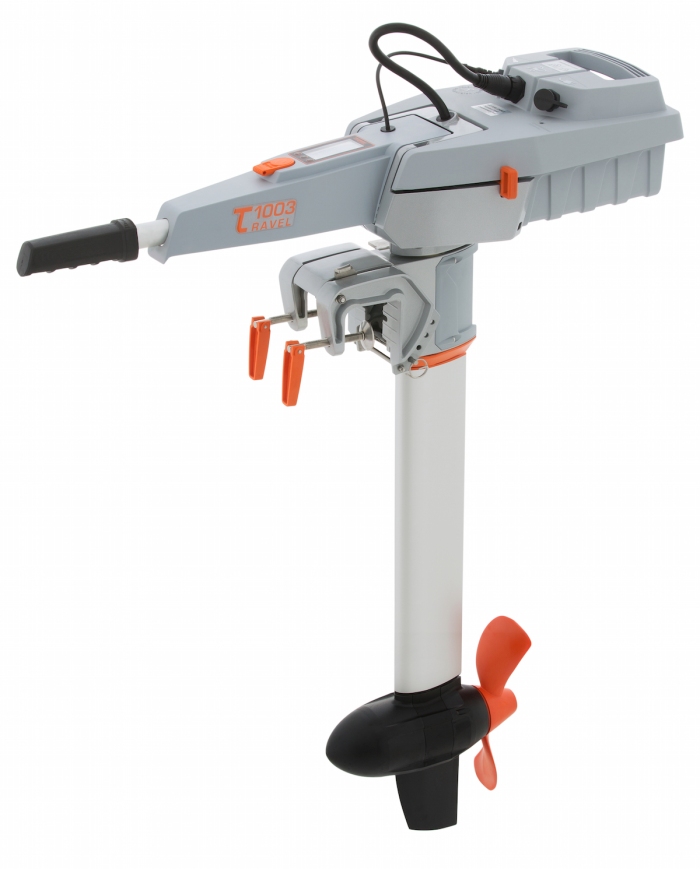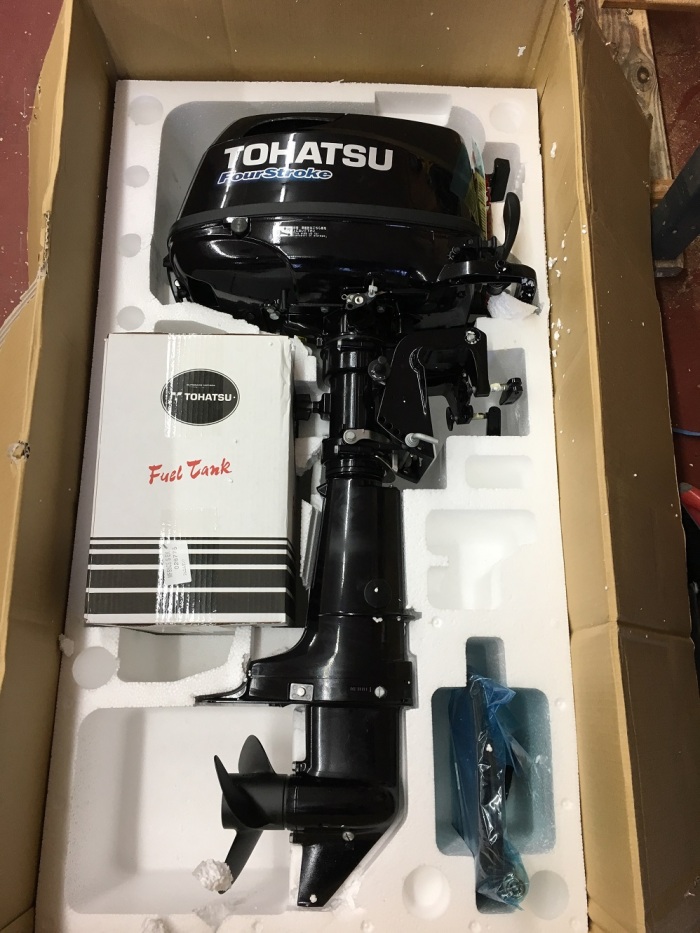For those that do not know I am an Aircraft Mechanic. Most of my life has been spent fixing motors and machines of one sort or another so it might surprise you to hear me say this: I hate gas engines. I especially hate small gas engines. Over the years I have been slowly ridding myself of anything resembling a motor under 600CC. The gasoline powered chainsaw, weedeater, leaf blower, and recently my lawnmower have all been slowly replaced by electric versions. Lets just say I have a lot of extension cords. I have been waiting for the day a truly usable electric motorcycle comes out. Did I mention my dream car is a Tesla? With the confessional out of the way lets talk about selecting a motor. 
This was my first choice, a Torqueedo outboard. The quiet, reliable, and efficient option lists for $2,499.00 US dollars (plus shipping and handling) on Torqueedo’s website. Because of the large tides and strong currents in my cruising grounds I would need a spare battery to feel comfortable, add $999.00. Even more comfort would come from the optional 50W solar charger that would let me charge while I sail, add $749.00. Grand total $4247.00 (plus shipping and handling). On the other hand a five horsepower Tohatsu costs $1,349.99 from online outboards and is delivered to my door free of charge. That price includes a gas tank that will run the motor all day. I guess that’s why I drive a ten year old Nissan instead of a Tesla. Oh well, lets cut a giant hole in the boat I have spent three years building.

A common feature of John Welsford’s designs is a motor well to hide the big ugly outboard. It was this feature that really set my mind on building the pathfinder. I have sailed boats with outboards hanging off the stern on a bracket and it was always a pain in the butt to use them. With the outboard well the motor is in the cockpit and fairly hidden so it doesn’t ruin the lines of the boat. The down side is eventually you have to chop a big scary hole in the hull. I spent a lot of time trying to measure and center the cuts but they layout finally came down to eyeballing it. I started by drilling a few reference holes so I could line my marks up outside.
I then found a hole saw that fit the shaft of the motor and drilled a “down” and “up” hole.

As I got closer to making the cut my operations manager made an appearance. He looked a little worried.
Quality control stopped by and was promptly ran off.
With the holes drilled I could trace the outline and cut out the hole with a skill saw.
With a hole for the shaft to go through it was time to cut the deck to fit the motor. I started nibbling at the deck until the motor fit in the hole. With the motor cut out roughed in I started moving the motor around looking for interference and making both the cutout in the hull and the deck look good. Here is the result.




















